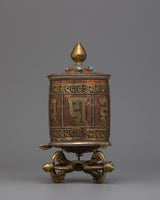
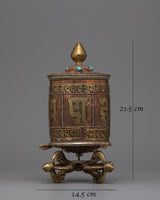

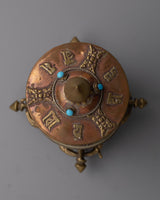

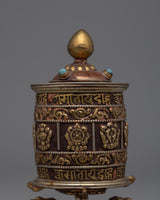
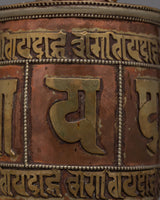
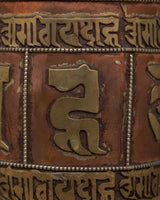
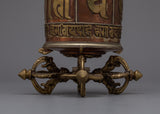
Tibet Prayer Wheel | Perfect for Enhancing Meditation and Inner Peace

100% AUTHENTIC

HANDMADE

FREE SHIPPING
Tibet Prayer Wheel
About The Prayer Wheel
Introducing the Tibet Prayer Wheel, a stunning handcrafted object that combines the unique elegance of traditional Tibetan workmanship with a profound spiritual legacy. This beautiful prayer wheel, crafted from brass and copper, has beautiful engraved holy mantras that add to its spiritual and visual appeal. It is meant to motivate and inspire. It stands on a double vajra platform, representing the reliability of spiritual practice and the unbreakable essence of truth.
The Tibet Prayer Wheel is a beautiful decorative object and a practical spiritual tool, making it the perfect choice for collectors, art lovers, and spiritual practitioners. This prayer wheel inspires thoughtfulness and respect whether it is placed in a meditation area, on a holy altar, or as a classy accent in any interior. It is a treasured addition to any collection or sacred space due to the intricate carvings of sacred mantras and the exquisite blend of brass and copper. This prayer wheel is a significant item that represents fine craftsmanship and deep spiritual values, not just a pretty decoration.
Material: Copper, Brass



















